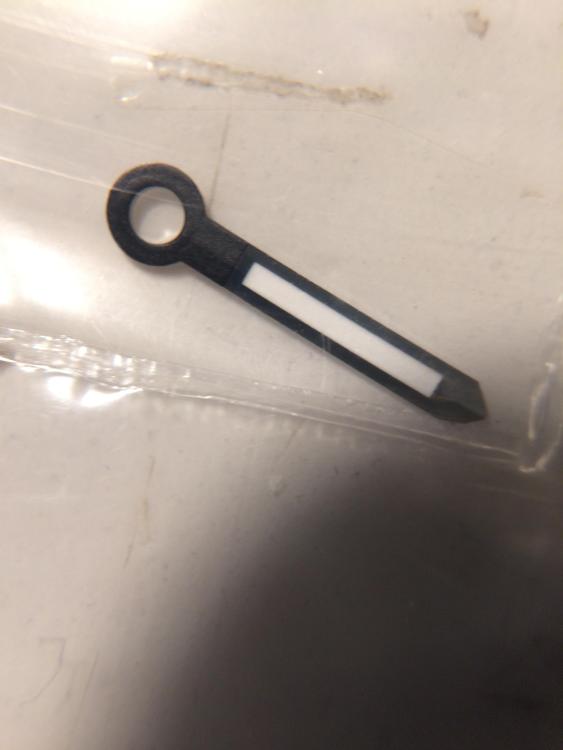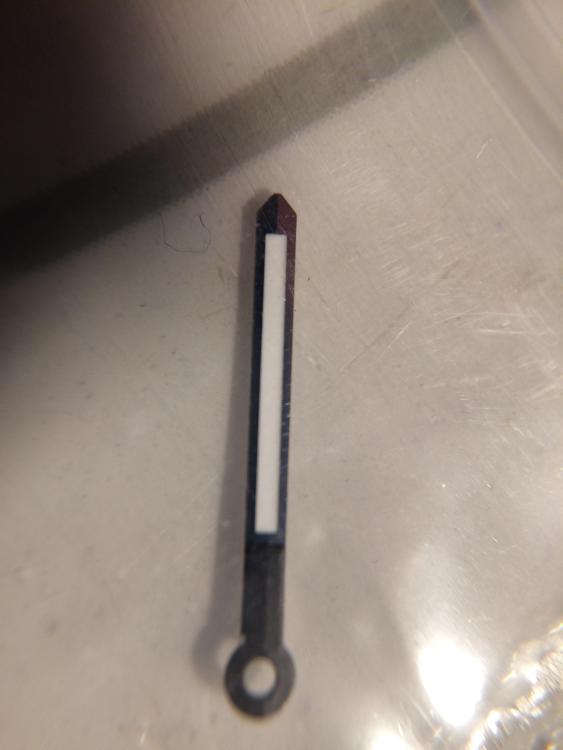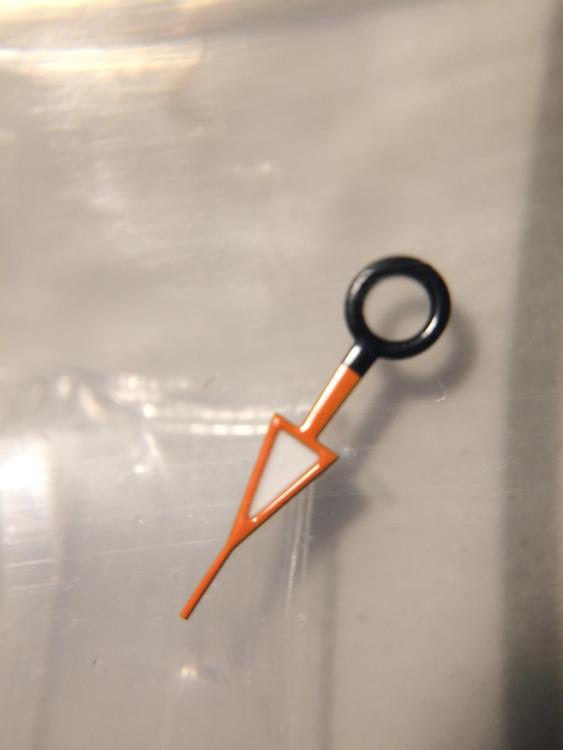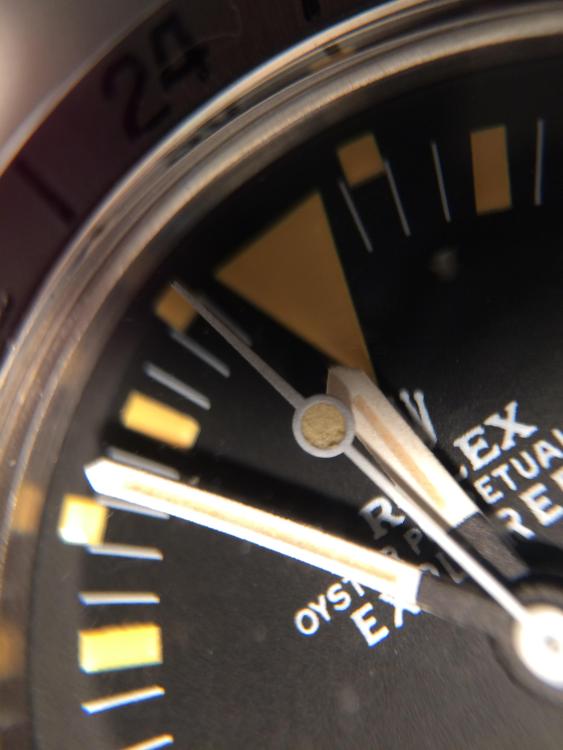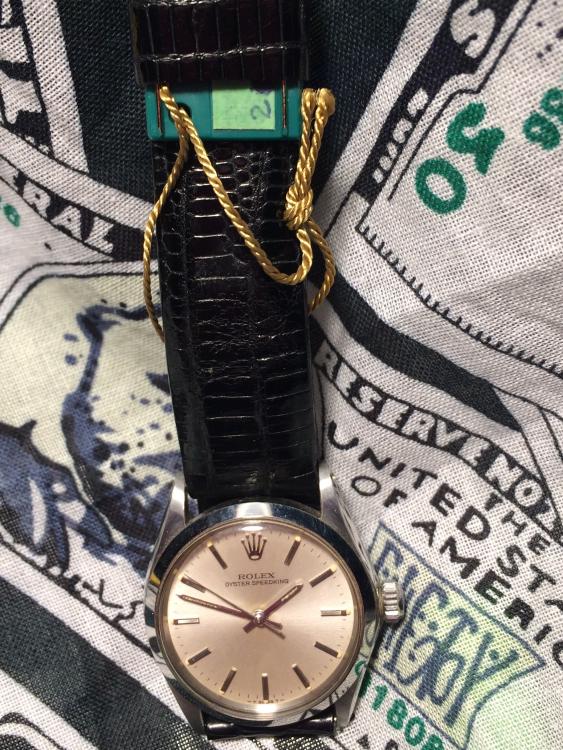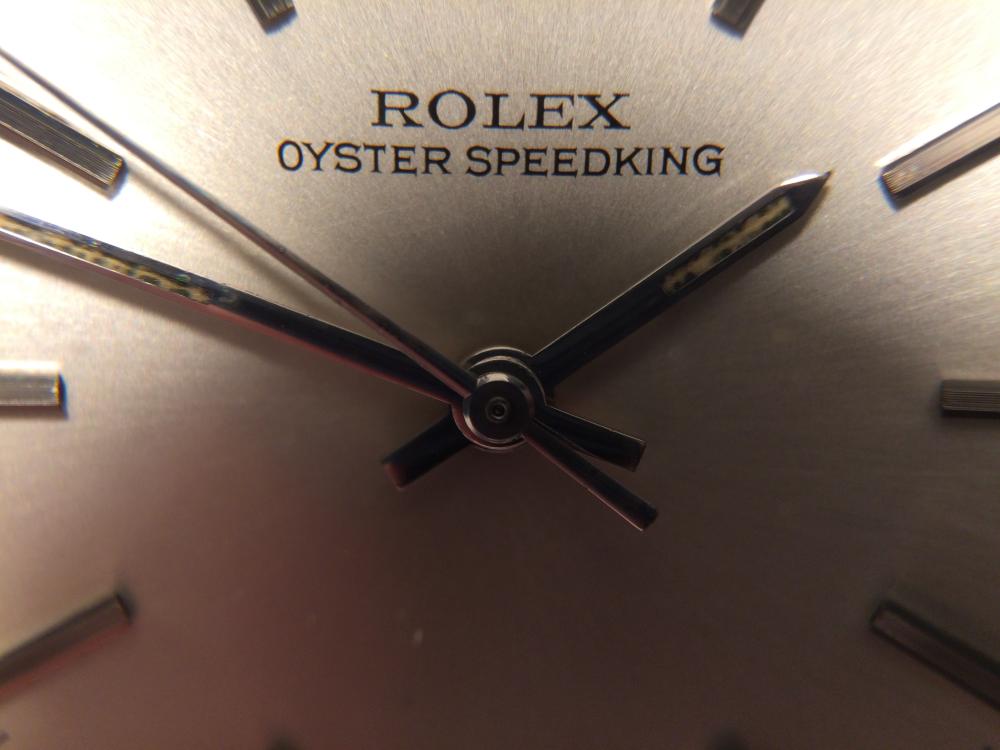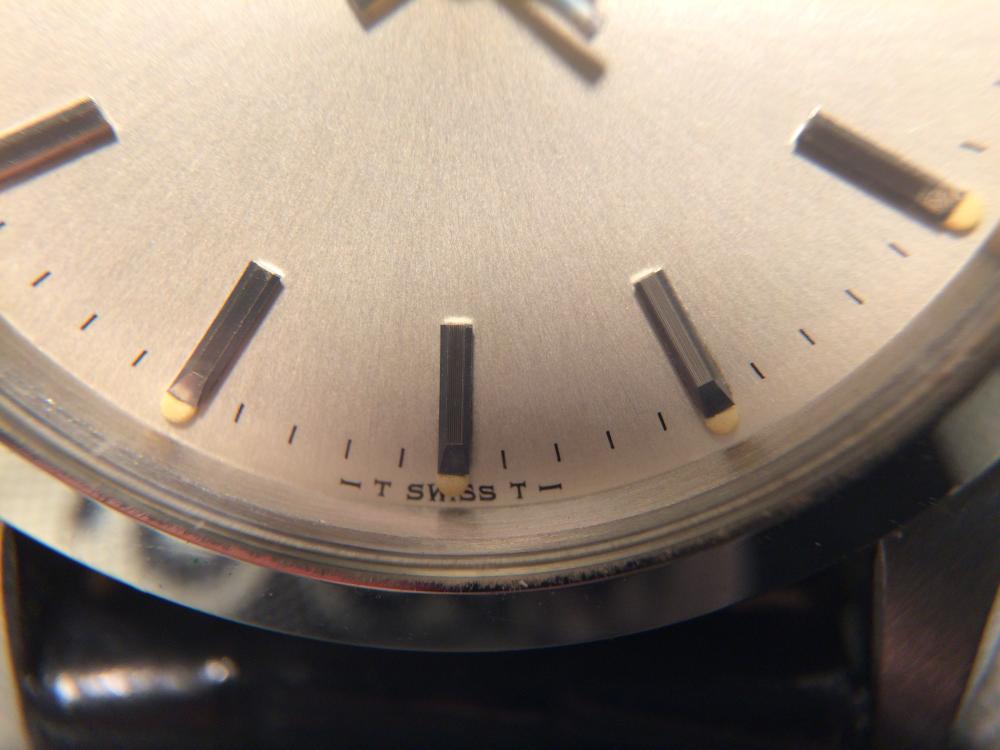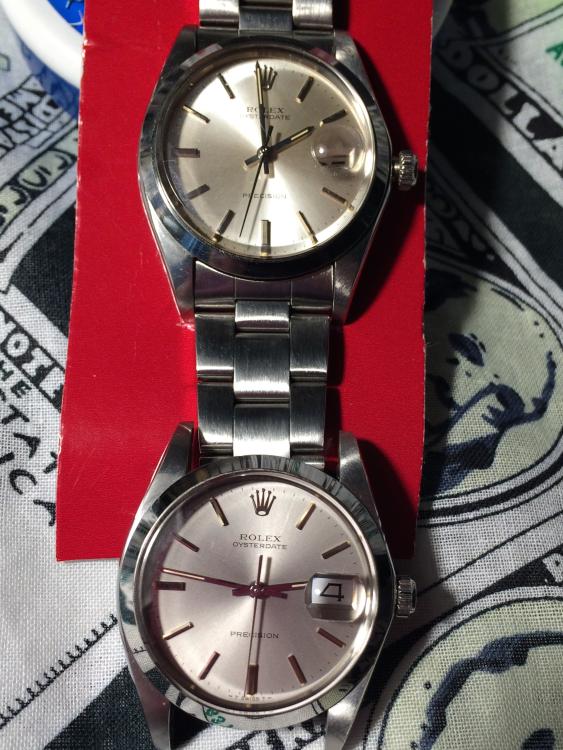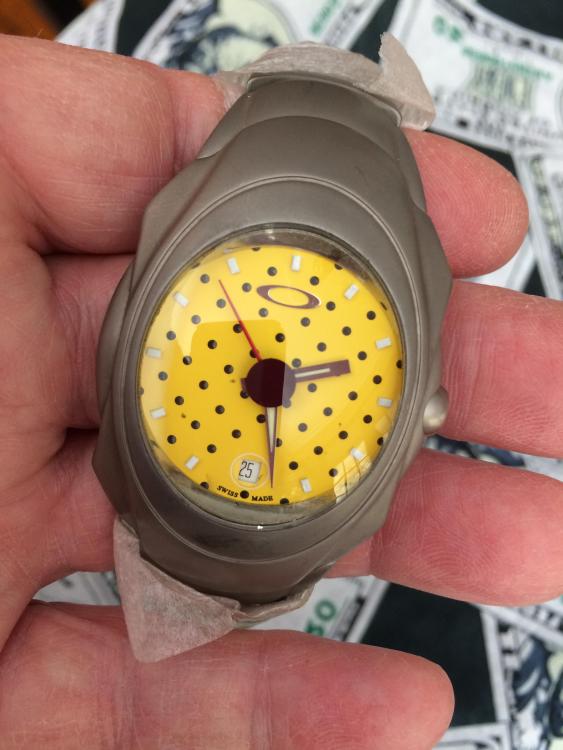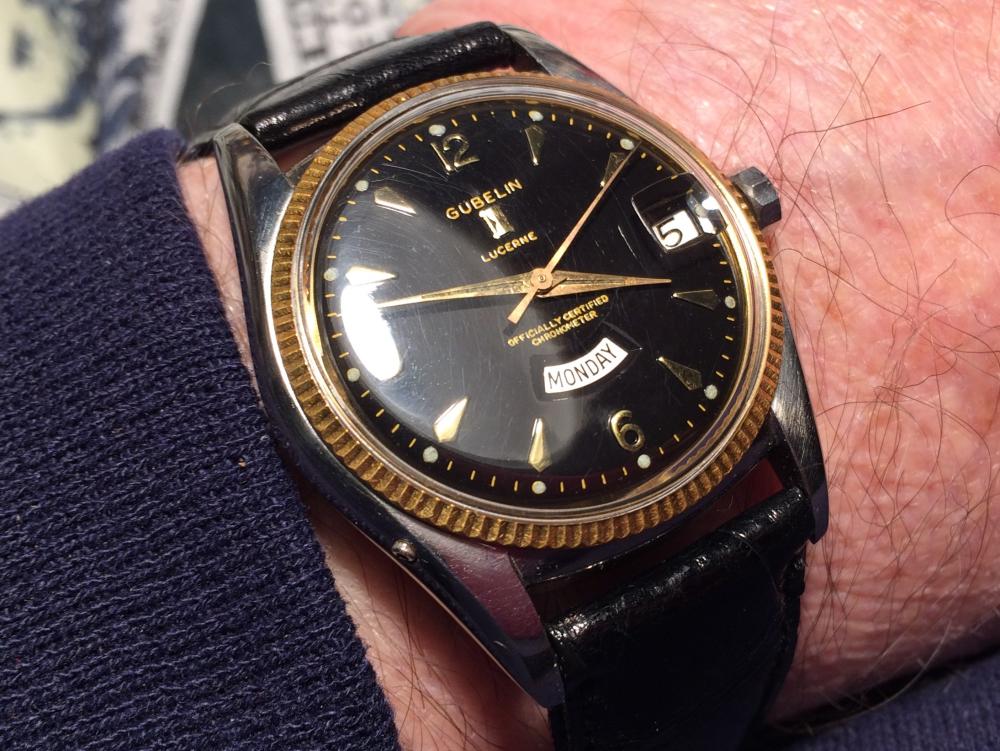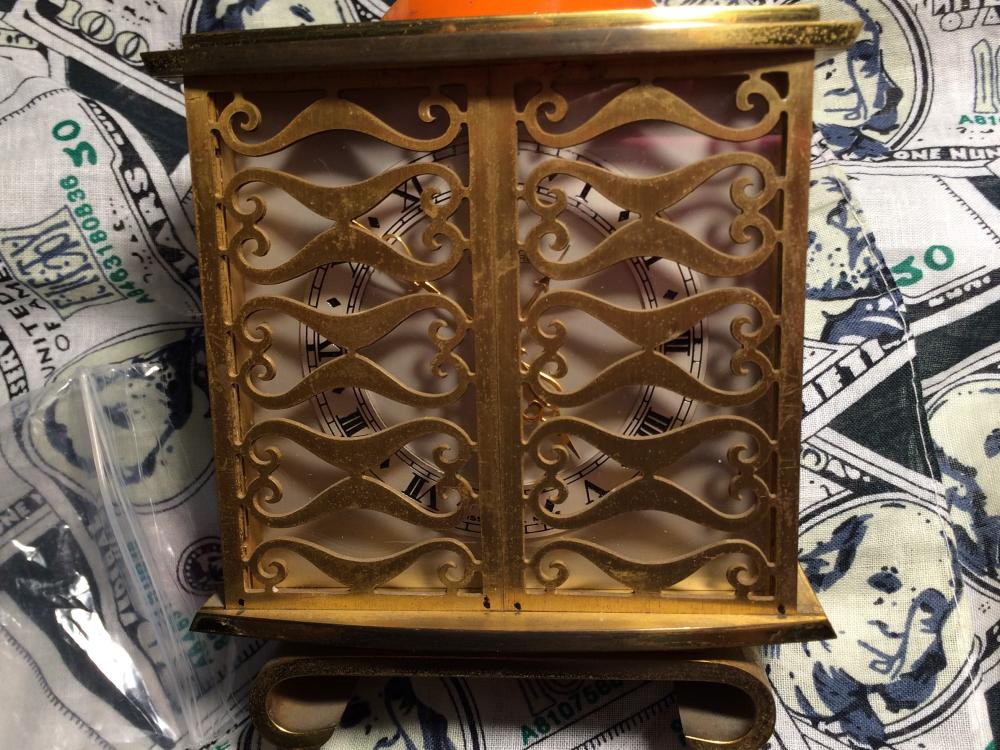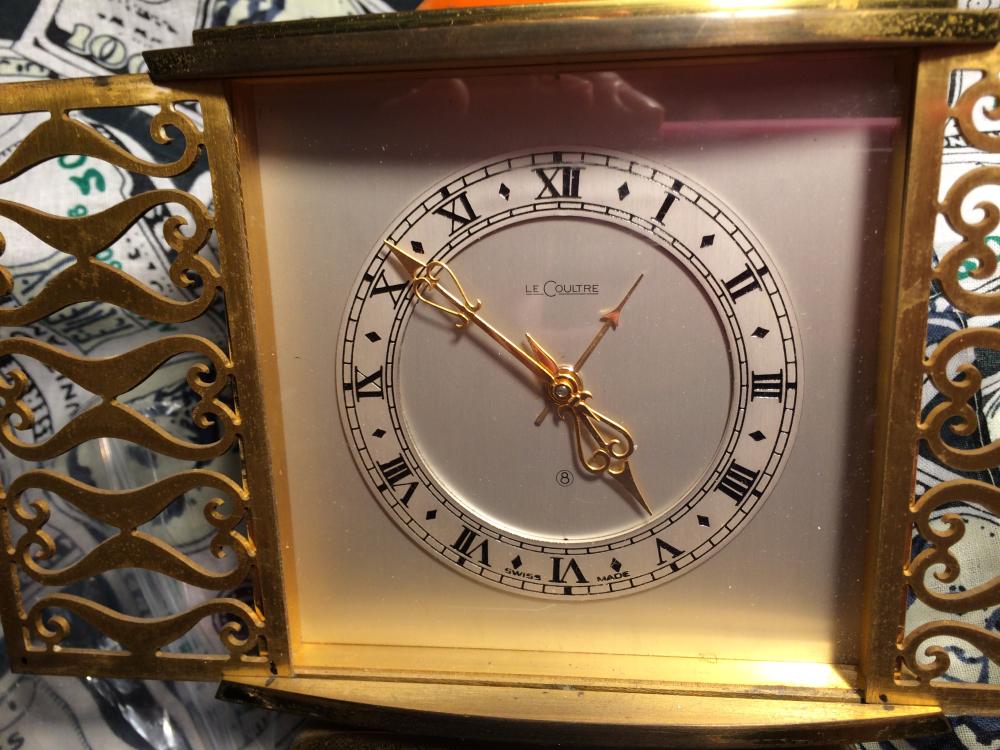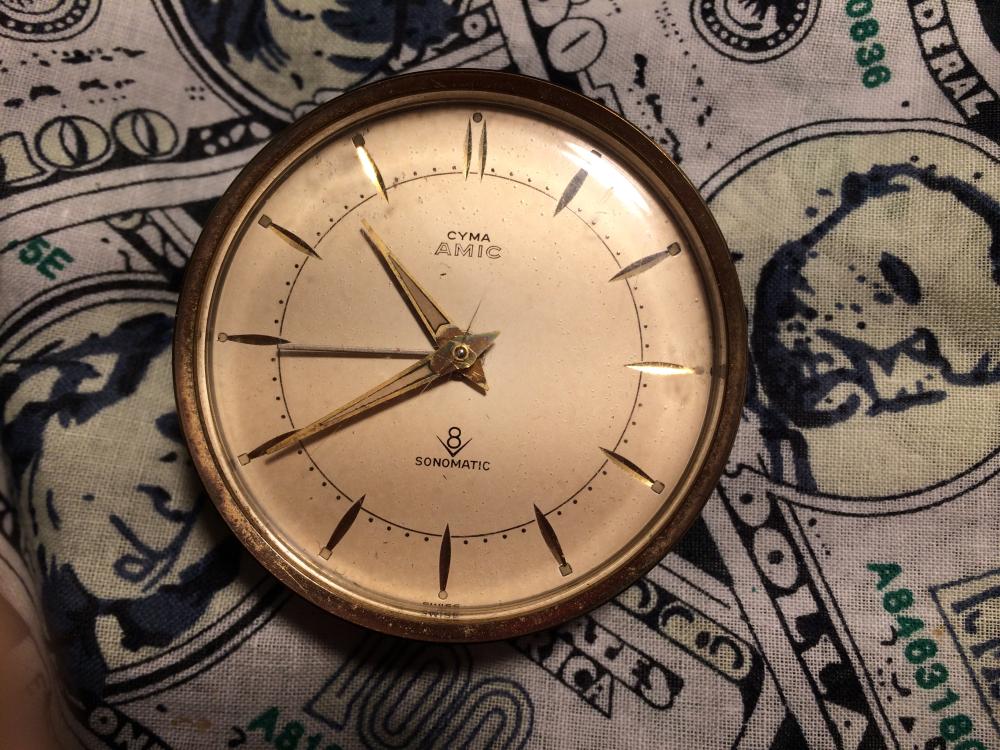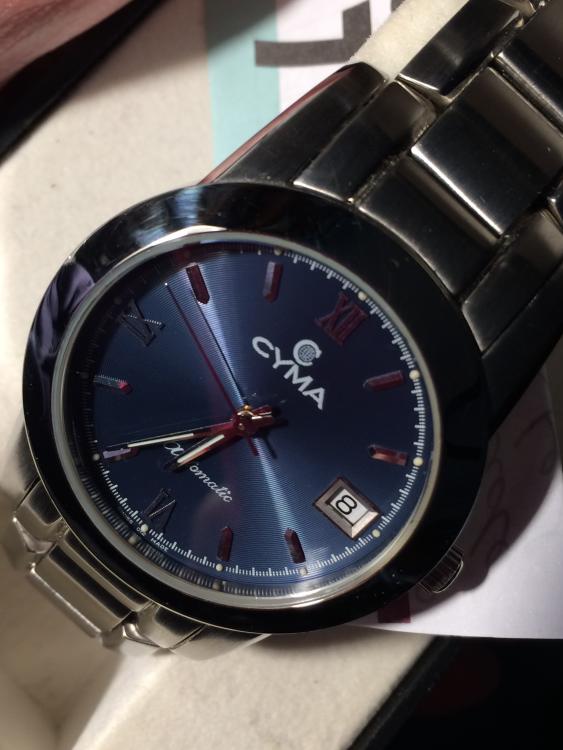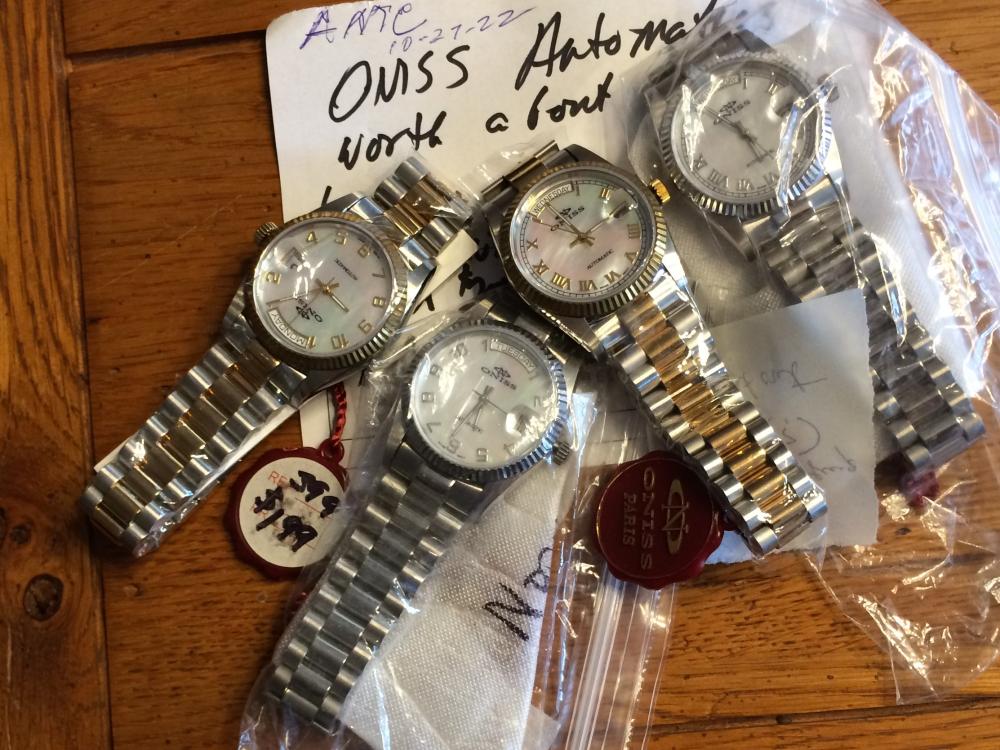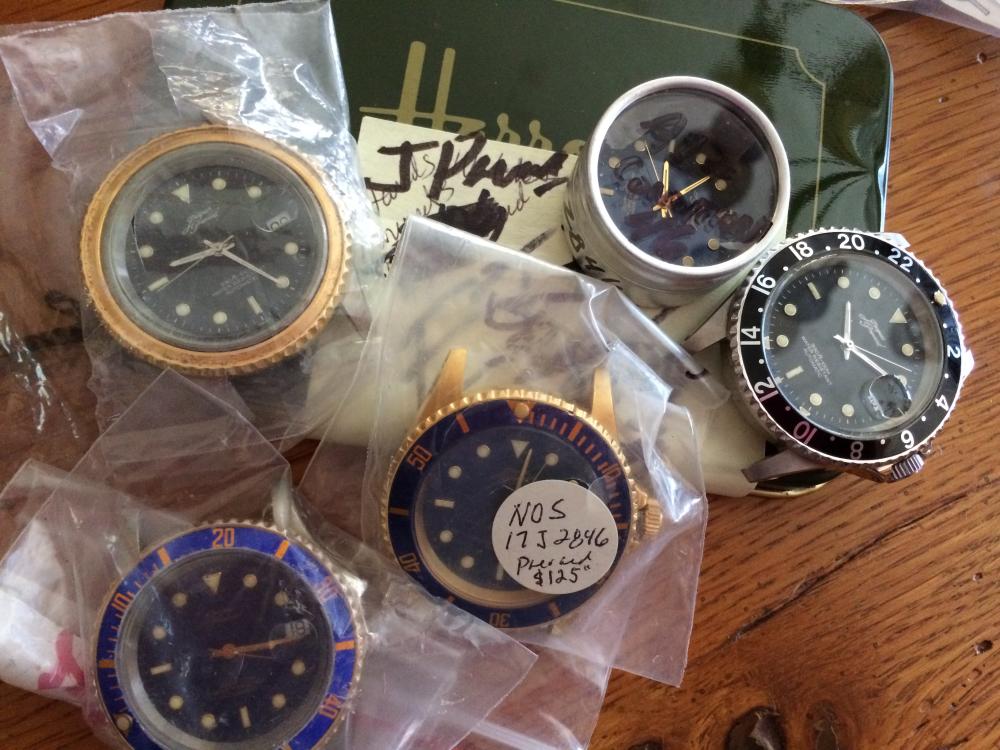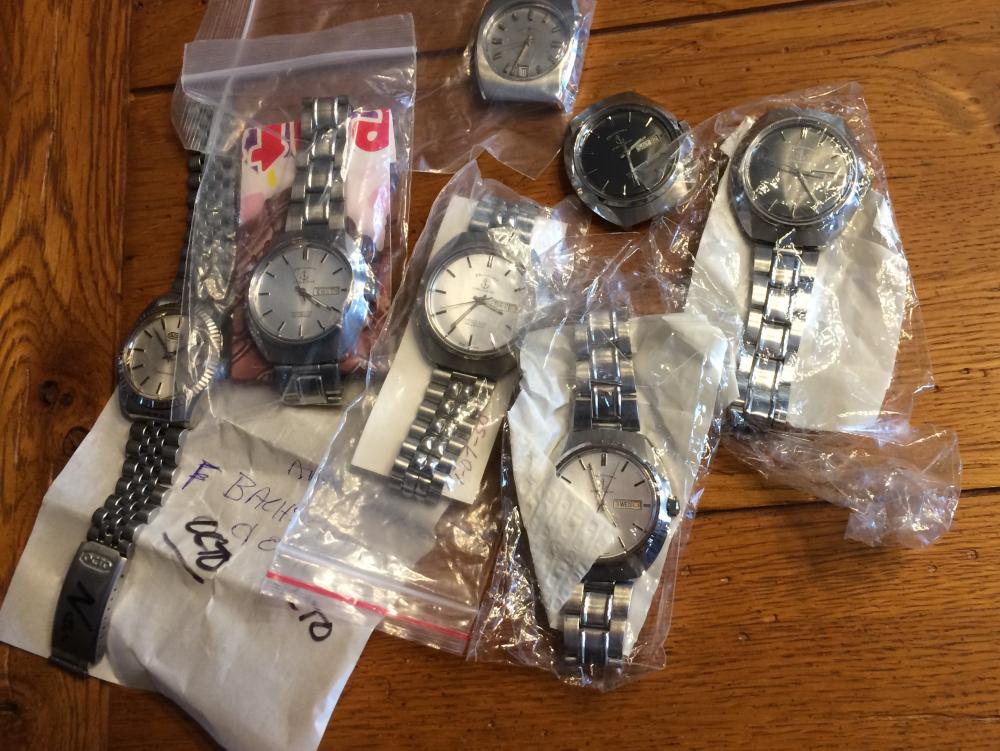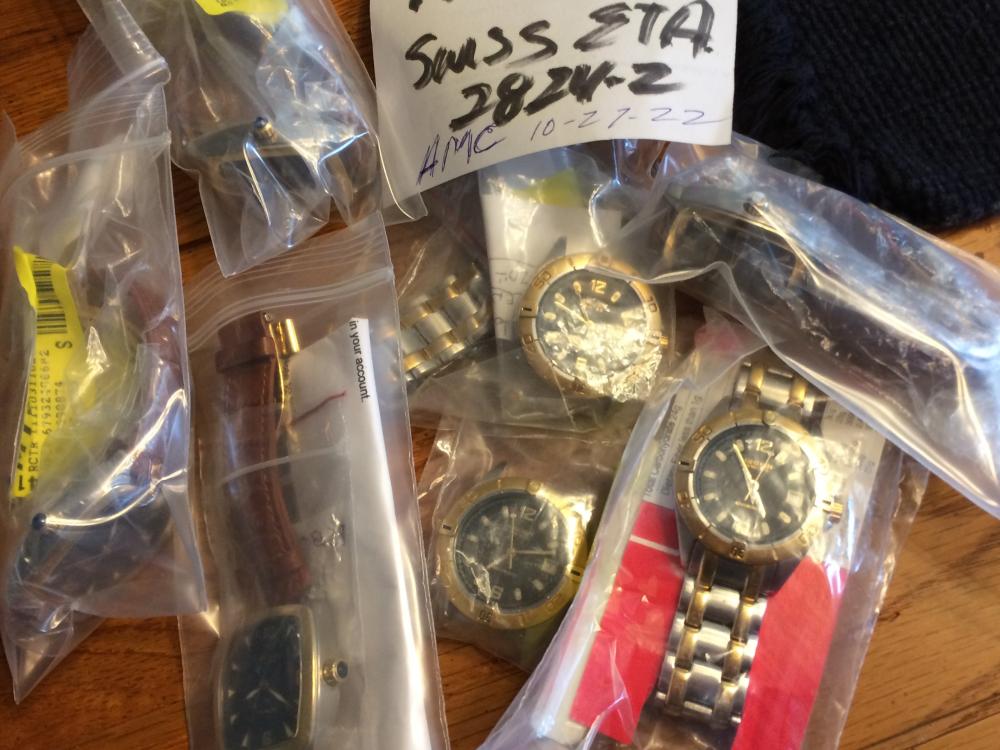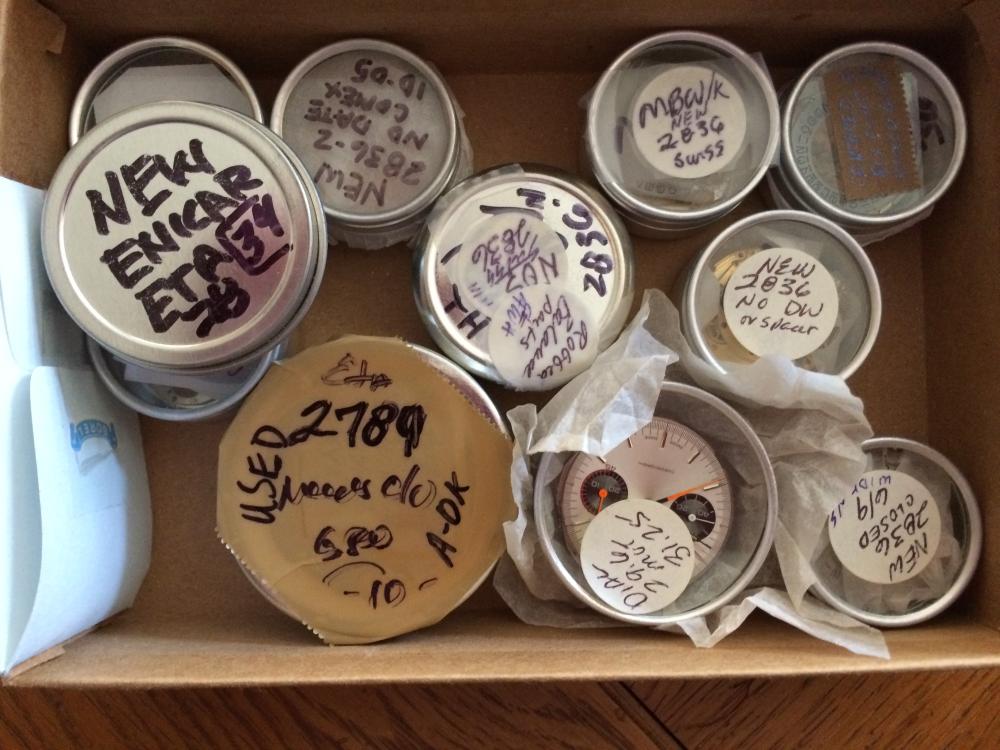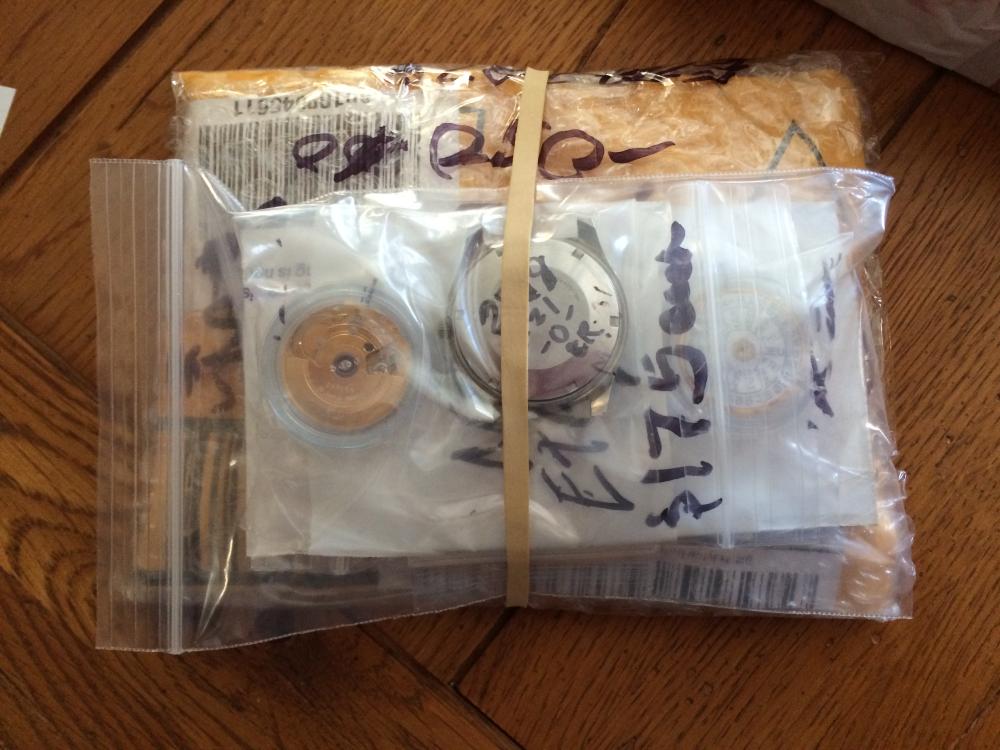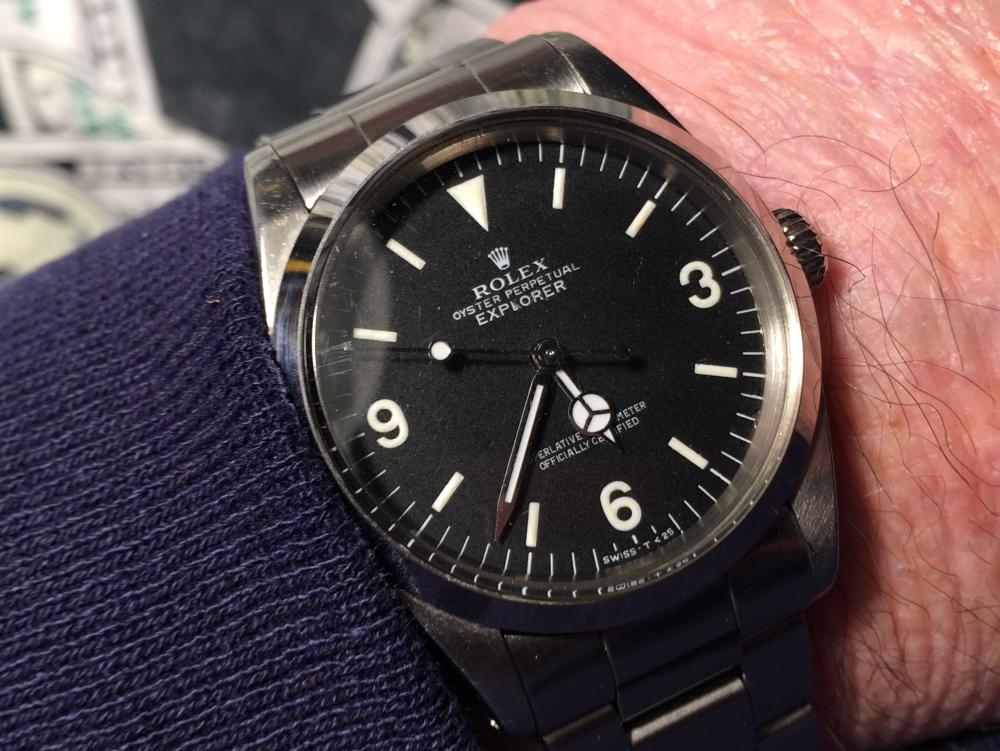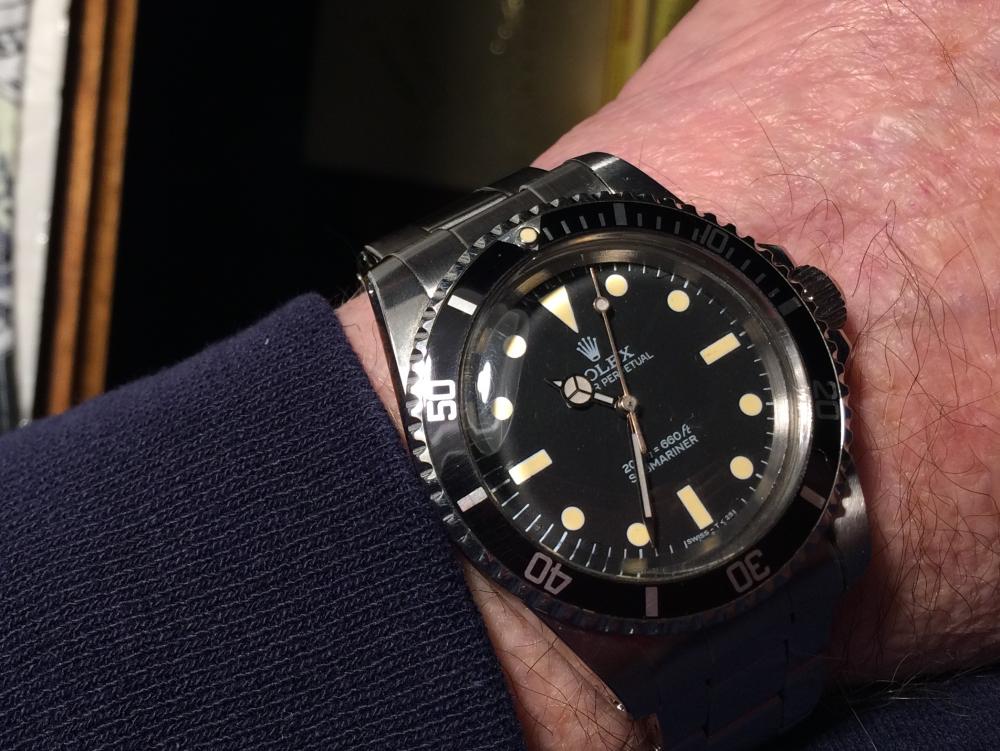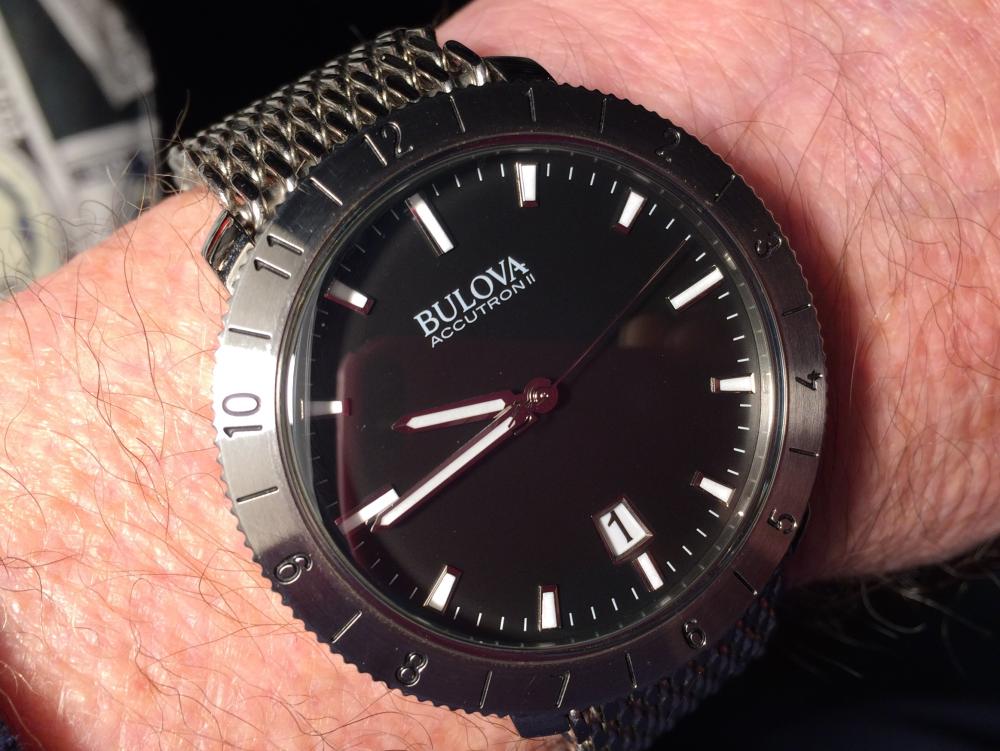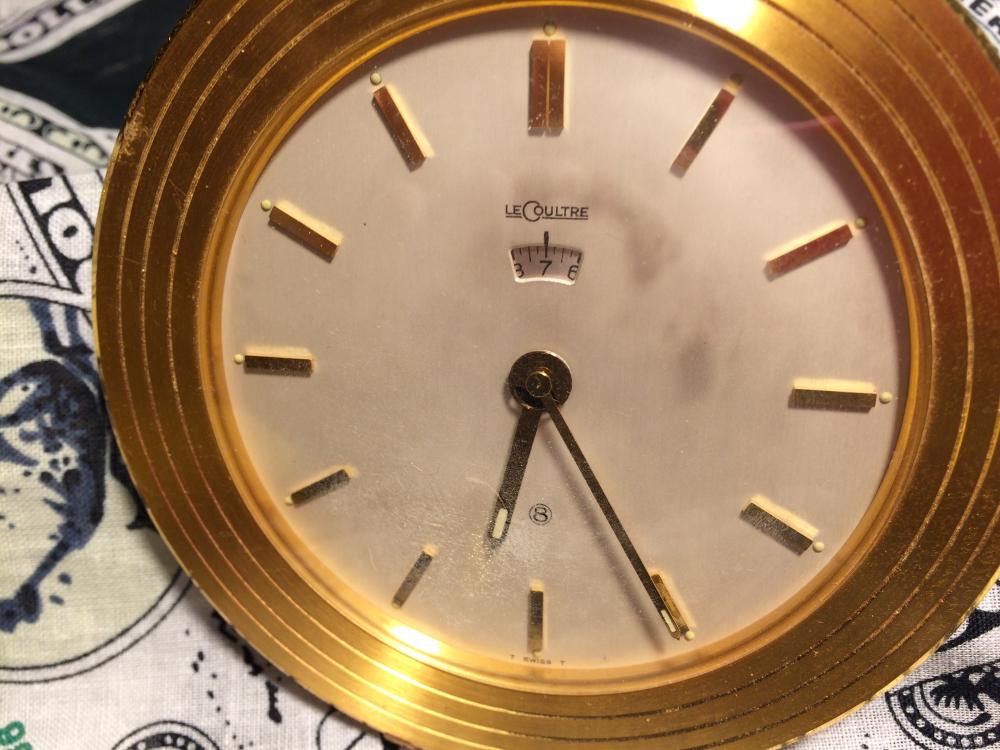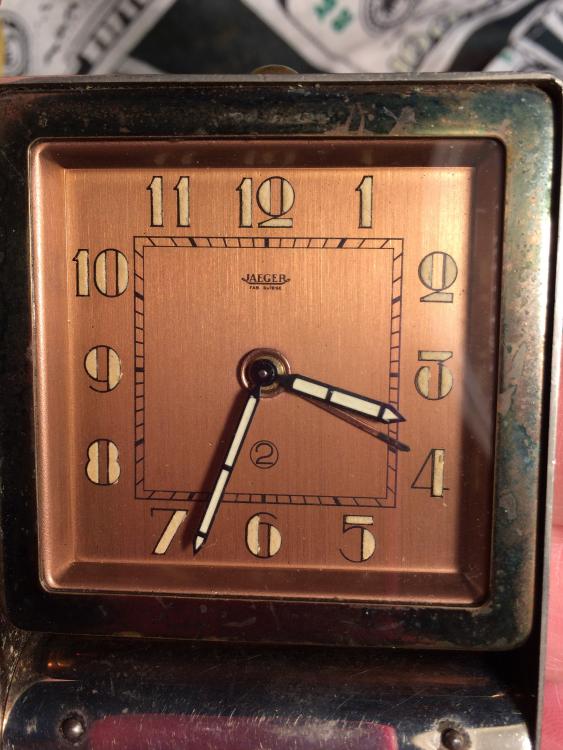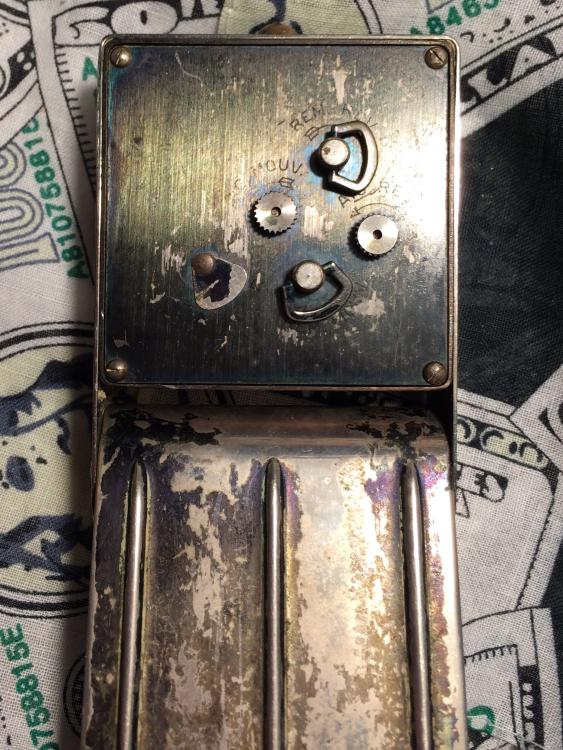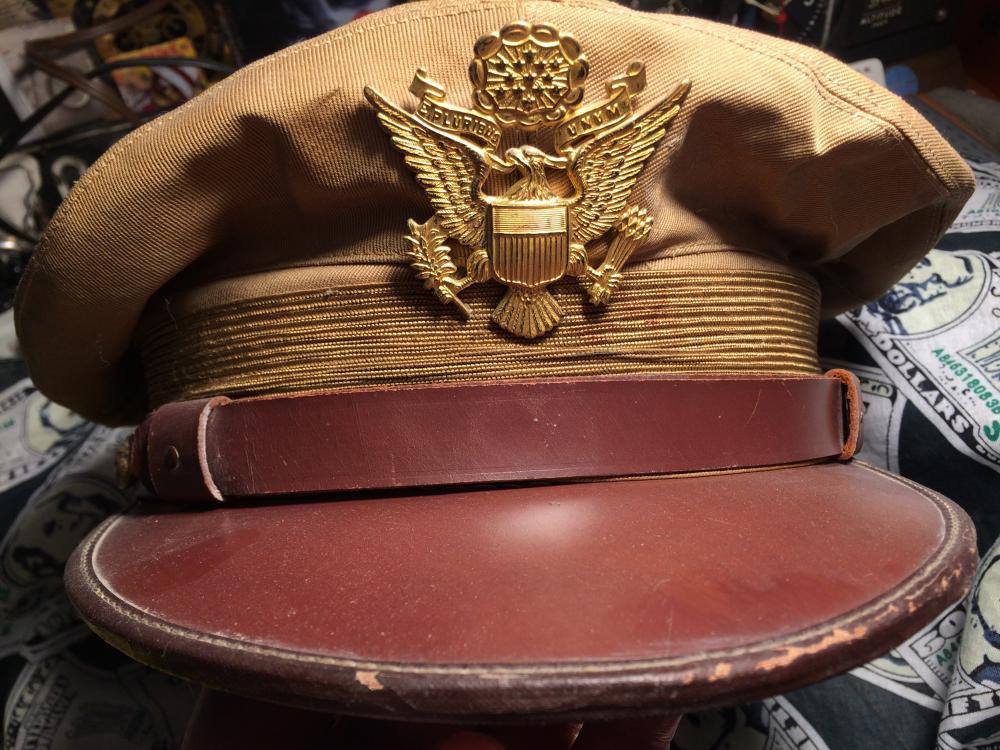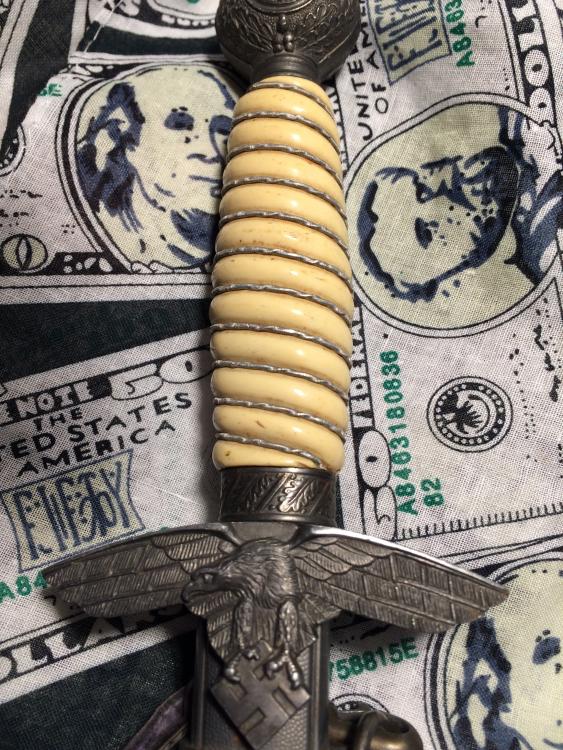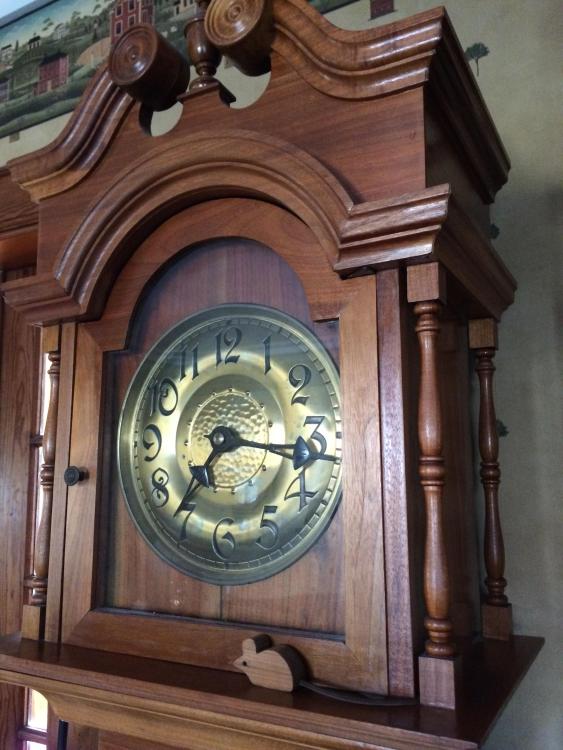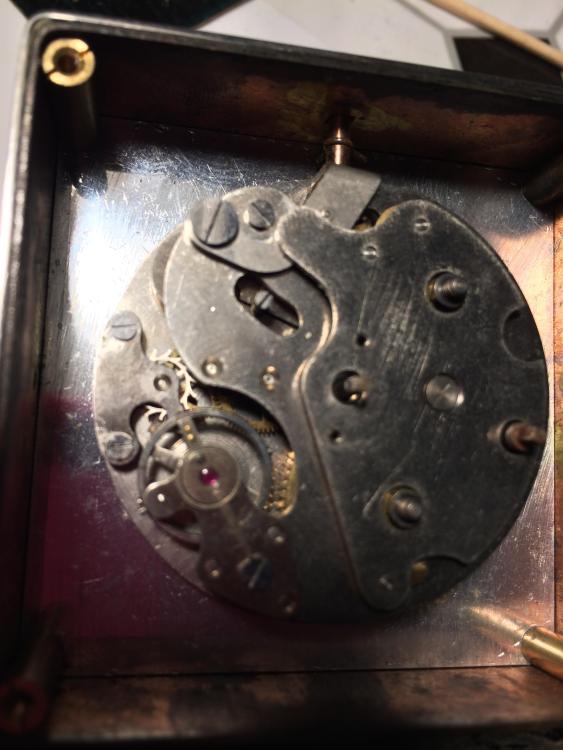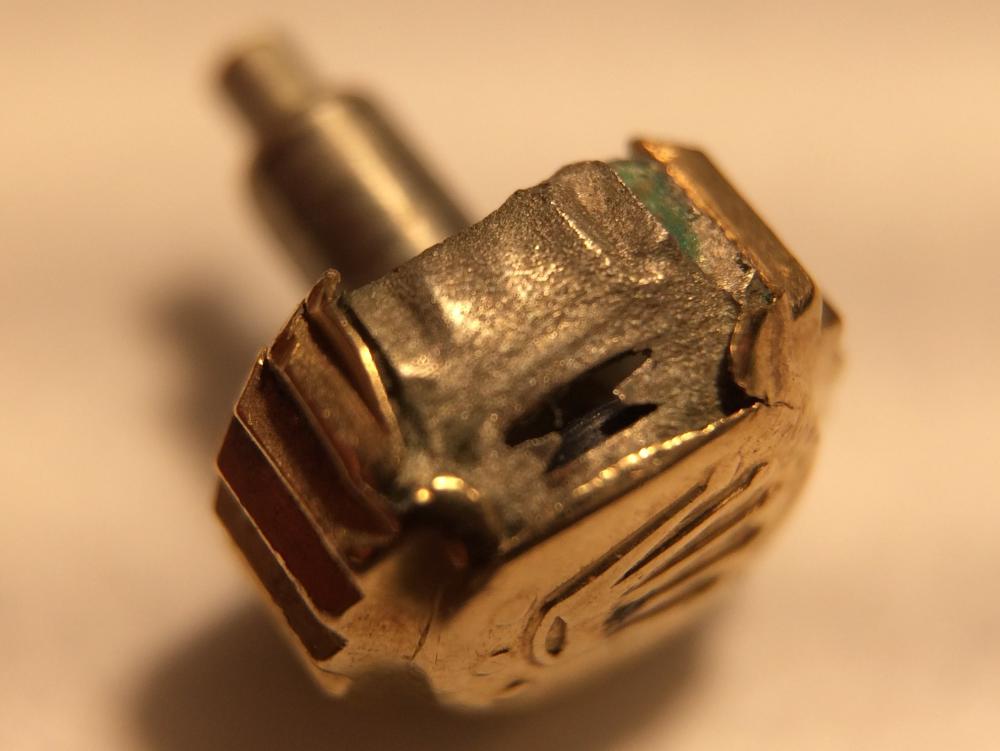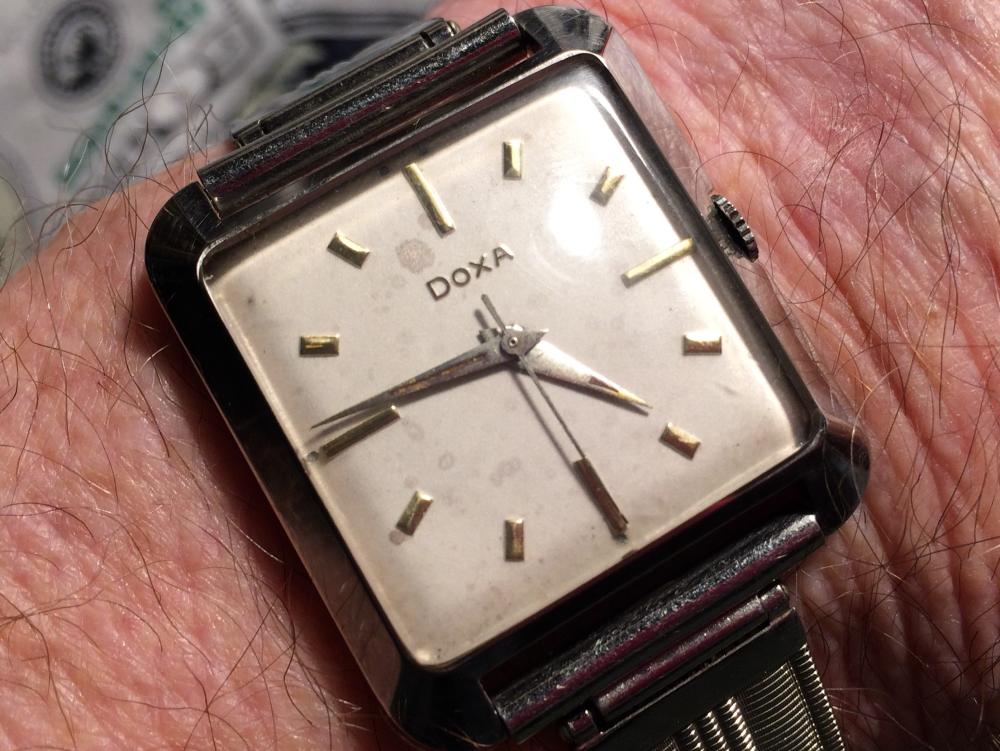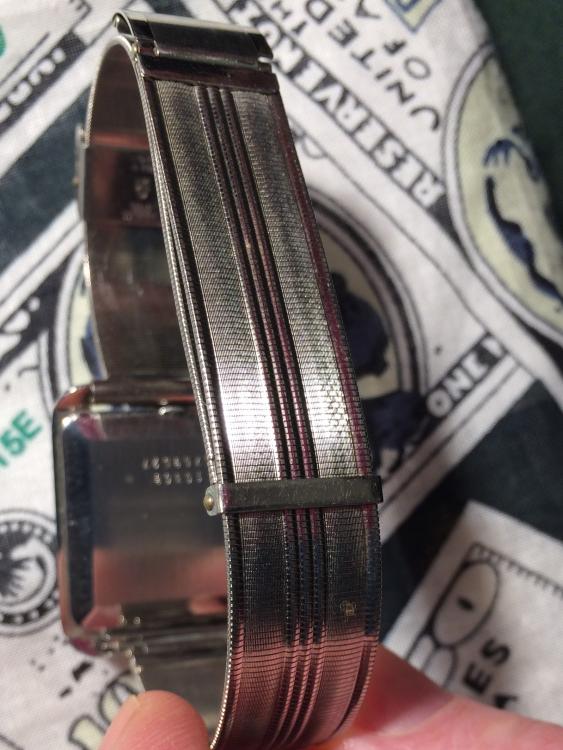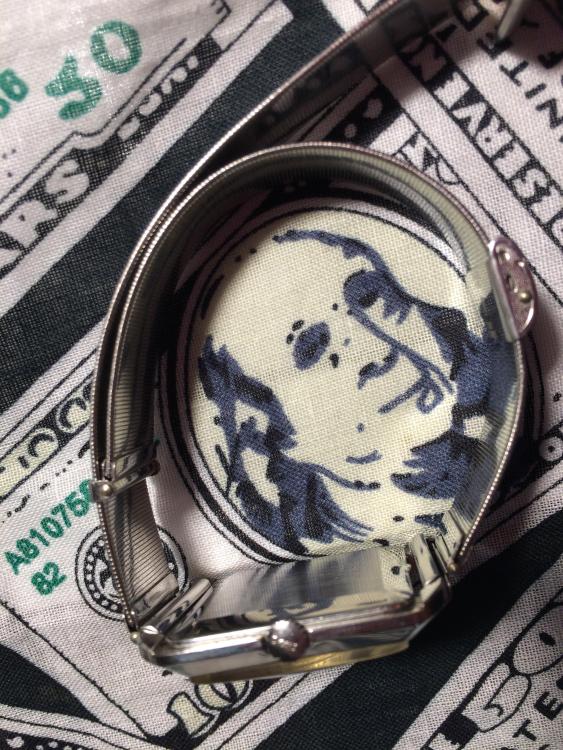When you buy through links on our site, we may earn an affiliate commission.

automatico
VIP Member-
Posts
3,180 -
Joined
-
Last visited
-
Days Won
153
Everything posted by automatico
-
Here is a Lemrich 1680 Mk1 dial but the pic is fuzzy. Fifth post down. Rolex Wristies thread - Page 139 - The Rolex Area - RWG I can post a better pic if it would help.
-
"how would you rate these hands?" Compared to the 'affordable' hands I have seen available now, they are very good...much like what is on my 'shortcut 1655' now. The main difference being your minute hand is a little bit narrow compared to mine. 'WatchLume' had very good hands for $55 a set but no longer have them.
-
I am still trying to find a set of '1655' hands to fit a rlx 1575 mvt with 24 hour GMT hand for my 'shortcut 1655' project watch. I need oem spec hands and have one pretty good aftmkt set on the shortcut watch but want to use them on another project. As I posted before, I got a figure of $380 delivered from MQ for his aftmkt '1655' hands and that was too much $$ for me so I bought a set from WSO to see how they 'stack up'. I had already bought a set from WSO for an ETA 28xx GMT but they are the wrong color and the hole sizes are off too much for the 'sc 1655' They are good quality. WSO hands for rlx 1575/GMT info: 1...They are the wrong color...oem are black/white and the WSO rlx cal 15xx hands are black/silvertone. 2...The WSO rlx '1655' hands were a little bit better than the ETA 28xx hands because the lume slots were not quite as long but the colors are still a problem, they are also good quality. The lume slots are a bit too wide but there is no fix for that. The best part is they cost $38.36 delivered...10% of the MQ price. What's next? They will have to be stripped, re-painted, and re-lumed. I'll post pics if and when they are re-finished but it may be a while because I have not stopped looking for reasonably priced aftmkt '1655' hands that are closer to oem. WSO hands for rlx 15xx (pictured in plastic bags)... The 24H hand is Ok and only needs the lume aged or changed. The H and M hands appear to be all black, but from the beginning of the lume slots to the tips, they are silvertone. No pic of the SS hand but it is a 'dot' hand and I'll use a 'no dot' hand. The 'shortcut' 1655 as it is now... To be honest...I am on the verge of giving up on another '1655' project. Q...Why? A...Because a correct rlx 1575 GMT mvt with genuine GMT parts alone is worth about as much as the same movement in a J&Wcom case/dial. Q...Why? A...The 'shortcut 1655' watch is worth maybe $2500/$2700 and a 'correct' rlx GMT 1575 movement in a J&Wcom case is not worth much more. Q...Why? A1...Because a replica is a replica no matter what mvt is in it. The 'value' is killed by it being a replica. A2...No matter how good it looks, that one word kills it (unless you are a crook). A3...Truth is, the 'shortcut 1655' is good enough for me. After all, I'm wearing a quartz '5513'. Ha!
-
"if you swapped the rep dial/handset/crown for gens (a relatively simple, albeit costly, operation), I doubt anyone -- well, save for the most neurotic watch savant -- would even have cause to time the movement of the sweep seconds hand." I didn't even notice it until I read up on the movement. I was happy not needing to wear or wind it. Ignorance is bliss. When I hear the word 'oysterquartz' it conjures up images of high $$ dead coils, step motors, and circuit boards. I took three (3) in trade over the years and was lucky enough to get rid of them before they croaked. I had less than $2250 in all three of mine added together...two tutone and one SS, all in fine cosmetic condition. I traded a 14K quartz Concord dress watch on a strap even for the best tutone. The guy I traded with had basically nothing in it after he took it in on trade for a high $$ gold watch. I later traded the OQ for a 6694 and $600. Still have the 6694...the $600 is long gone. OQs are high priced hammer bait today. Imho. From "ROLEX FORUMS' Complete overhaul $2,250.00 - Electronic module - x 1 - Motor module - x 1 Refinish Bracelet Replace Clasp $185.00 - Clasp 16/100 17000b st - x 1 Refinish Case Replace Crown $46.00 - Crown with gasket 604 st - x 1 Replace Crystal $133.40
-
Re: Rolex Wristies thread - Page 144 - The Rolex Area - RWG Fourth post down. After wearing the quartz '5513' for a while, I came to a few conclusions: 1...An old 5513 runs at 18000 beats per hour, the quartz '5513' runs at 14400 bph. Not much difference and it is not obvious to most 'watch watchers' unless they zero in on it. 2...The vast majority of 'drive by' wristwatch observers think all rolex! watches have smooth sweep second hand motion like an Accutron. Therefore, they think every old rolex! they see is fake. 3...A late model replica rolex! running at 28800 bph fools most of the observers if the watch looks pretty good. 4...What the rep-rep world needs is a quartz movement that runs at 18000 bph +/- and one that runs at 28800 bph +/- with the correct date font/offset and hand sizes. 5...High beat sweep second hand quartz movements are a low cost reality. 5A...Bulova Precisionist technology proves it. 5B...Three volt batteries make it viable. If our hero (rolex) decided to make a New! Improved! top grade 'oysterquartz' movement with a high beat sweep second hand as an option on their popular models, they would have a big hit on their hands...and a hell-of-a-lot-less warranty claims. One problem comes to mind...they would need to figure out how to justify a $300 movement in a $10K stainless steel watch. ...but they have already done that. Ha! Imho.
-
Re: "You can't beat an old Rolex." Posted above. "I have a 6430 Speedking, new from an AD in 1972 ($125US), worn only a couple times shortly after I bought it. The watch would probably pass for nos and I always thought I paid $130 for it but I looked it up just now and it was $125 OTD (out the door). I never paid any attention to the markings on the dial and always figured it had tritium lume, but the dial developed what appears to be 'radium burn' where the hands were left in the same position for over 40 years. I have not looked at it in a while and I'll take a picture of the dial next time I run across it, according to my notes it was made in 1969." Looks like I was wrong. Again. I dug the 6430 Speedking out of hibernation and the dial is slightly faded but shows no sign of burn from the lume material. It is a tritium signed dial, the marker dots are faded, the lume in the hands has turned dark and is eating on the hands, but no 'burn streaks' appear anywhere. For what it's worth, this is what a watch might look like after being stored 50 years in a dry, heated safe...the age shows mostly on the lume and dial. It still runs, keeps good time, and the lizard strap is not cracked or brittle...unlike myself. Ha! Something else... While digging through 'old Rolex watches', I ran across two more that are about the same age (mid to late 1980s), one nos while the other one has been worn quite a bit. They are close to the same age, have the same reference number (6694), and the worn example shows what sunlight etc. can do to a dial. The nos example (without bracelet) still has the same dial color as it did when I bought it new in 1989. The nos watch also came with an Oyster bracelet and it is stored with the watch. No signs of tritium corrosion on either watch, just dial fade on the used one. The lume looks the same on both watches, no lume fade on the used one. Both have the same pointed hands and neither one has ever been apart or polished. Both have 21600 bph cal 1225 hand crank movements. My conclusion: After looking at my tritium lume watches and literally hundreds of pictures, plus reading a LOT over the years...I can say I have not seen dial finish (paint etc.) damage directly caused by tritium. Tritium damage to hands...Yes. Tritium damage to markers...Yes. Tritium damage to the dial finish...Not yet. But I could be wrong. Again.
-
Story of a broken watch used as a toy when aged 4 years oldT
automatico replied to horologist's topic in General Discussion
-
Yeller 'Oakey' from 12 or 15 years ago... Still nos and wrapped up. Steel case/bct with DG automatic movement.
-
With one runner-up. Mine... Exp 1016 Sub 5512 Exp II 1655 Runner-up... DJ 1603
-
Anyone ever seen one of these balance wheels before?
automatico replied to horologist's topic in General Discussion
"Anyone know or have seen this type before and how to regulate?" If I ever saw one like this, I do not remember where it was. Looks like an ETA bal-[censored] -c-c-c-ock! You probably regulate it by turning the weights (because of the slots) or sliding the weights in or out. Could be from a run of special movements made for a specific brand of watch. One example being the Wyler 'incaflex' balances with flexible spokes to absorb shocks without shock springs on the balance staff jewels. -
The dial looks very good! You can't beat an 'old rolex'. I have a 6430 Speedking, new from an AD in 1972 ($125US), worn only a couple times shortly after I bought it. The watch would probably pass for nos and I always thought I paid $130 for it but I looked it up just now and it was $125 OTD (out the door). I never paid any attention to the markings on the dial and always figured it had tritium lume, but the dial developed what appears to be 'radium burn' where the hands were left in the same position for over 40 years. I have not looked at it in a while and I'll take a picture of the dial next time I run across it, according to my notes it was made in 1969. If it does have tritium, could trit also cause dial burn? I never heard of it. Have a nos 6694 serial 88xxxxx ($925 OTD from AD), parked since 1989 and it shows no trace of 'dial burn' on the tritium lume dial. The $925 figure was probably list price because I bought it on 'The Rolex Plan' where you paid for the watch in 12 equal monthly installments. At least they knocked the sales tax off. Q...Why would I buy two new watches and put them away? A...Because they were manual wind oyster case rolex watches...the end of an era. A fellow who worked at RUSA NYC back then told me the 6694 was from the last run.
-
'Gubelin' Bought this Baylor watch in November 1990 with a faded dial. Had the dial refinished in Nov '92 and it came back as a Gubelin so I left it that way. The trademark on the dial is similar to Gubelin and the dial company made a mistake. Steel case, gold bezel (?), acrylic crystal, 20mm crocodile strap...the pusher at 8 sets the day of the week. I've had a lot of dials refinished and there have been a few mistakes made by the dial companies. One dial company refinished a ten diamond rolex dial and sent it back without the diamonds, just ten holes in the dial but they found them and made it right. I've also had vintage 'snap back' Bulova, Elgin, Hamilton etc. dials sent back with the wrong brand names. Baylor is a 'House Brand' of Zayle's Jewelers and there were some very good watches made with the Baylor name on the dial. I bought one of these in Sept '92 for $140 and traded it away of course; Baylor 4213 GMT Chronograph stainless steel VX 724 dates 1970's (fabsuisse.com) Baylor info: Baylor | OnTheDash Baylor Watch Company is from Texas (chronocentric.com)
-
le Coultre 46 Folding Alarm Clock User Manual
automatico replied to freddy333's topic in General Discussion
Have not found my Dad's folding alarm but ran across these two while looking. LeCoultre 8 day alarm, wide open... Case closed... Cyma Sonomatic... On the back it says '15 jewels, lever, Swiss Made'. Has cleaning dates 2-18-56 and 11-27-69. Back view, different clock but exactly the same model... Could not find the stand for mine. And one Cyma wristwatch... Swiss made, ETA, stainless, sapphire, nos. -
You might also look for older used watches with ETA 2824 or 2836 movements on eBay etc. Make sure there is a clear picture of the movement and look for rust, ruined screws, scratches etc. Rust often collects around where the stem enters the movement because of a defective crown, also look for water spots on the dial. Look for nos obscure brands with ETA 2824/36. About 12 or 15 years ago, I stumbled into some new in box 'Oniss' brand day/date watches with ETA 2834 for $65 each in fancy wooden boxes with b/p, but they are all gone now. Edit 10-27-22...found four of them, pic below. USA Walmart stores sold 'Swiss Gruen' automatic watches for a while about 15 or 18 years back with ETA 2824 movements and they blew them out to wholesalers when they did not sell. I still see one for sale now and then for a fair price....$120 or so. Here are two examples of what to look for... Gruen Swiss Automatic Watch, Running, Sold as is #1160 | eBay mens Gruen Authentic ETA 2824-2 Swiss Movement Automatic 25J Jewels watch GSM043 | eBay Here is one on Etsy at a pretty good price... Rare Gents GRUEN SWISS 25 Jewel ETA 2824-2 Automatic Display - Etsy They also made a diver style but they do not come up for sale very often... wristwatch: PREOWNED GRUEN SWISS AUTOMATIC GENTS DIVER'S WRISTWATCH (beautifulwatche.blogspot.com) "A good deal is where you find it." Show and Tell... Here are a few of the watches I bought for a small percentage of their list prices years ago just to get the movements. Many are worth a lot more now than I paid for them back then. Nos Oniss with ETA2834-2: The Oniss watches came in nice wood boxes. The $199 tag was our store price, retail prices were crazy. Btw, I paid $65 each for them, I changed it above from $60 to $65. Nos Jaques Prevard dive style with ETA 2846: Ole Jaques needed a lesson in bezel compatibility. Had 10 or 12 to begin with but I used/traded/sold/gave away some over the years. One ETA 2824 OCTO (!!) and a few ?? Can't remember the name and I have already put them up. All nos. When was the last time you saw an OCTO? Nos Swiss ETA 2824 Gruen: Odds and ends: And one Val 7734 for a Toot MC project. When? Never. Nos ETA 2879, one watch and five movements: Put a nos ETA 2879 in my MBK '5512'. They run at 21600 bph and are good for vintage projects. If I posted what I paid for them, there would be a bounty on my head.
-
"Nice! where did you source the watch hands? They look pretty good!" Thanks! The hands are pretty flat and came from ST...'Tudor Style Sub Hands'...RH-TD/SUB-W. Got the bracelet from a 'Crazy Sale' AK/Explorer from 'Paul' @ Abay, 2005 or so. The dial came from RWG member 'Stilty' around 2011 iirc. The case from a guy on the 'net in March 2003.
-
-
"Nice!" Thanks! "Did you make your own movement spacer?" Yes, it is made out of a brass flat washer. Can't remember the original size but I had 6 or 8 machined and now they are 31.6mm OD, 24.0mm ID, and 2.25mm thick. Only the OD was cut down at first, the center hole is same as when purchased. A friend cut them on a shop lathe because my Sherline lathe is small and would take too long, it is Ok for sizing the rough cut spacers to cases and movements though. These spacers work fine for projects using cases made for rolex 12.5 ligne and ETA 11.5 ligne movemets. The ID is a little bit too big for the Hattori movement as it is 23.6mm so I had to push a thin metal movement spacer in between the movement and brass spacer. Not a very good solution but it works. Next time, I'll use a spacer with the correct ID if I can find any flat washers to make them. All I have to do myself is use the Sherline lathe to machine the brass blanks to fit a specific watch/movement.
-
-
I've said this all before in bits and pieces. Here it is, all in one spot. All imho. Below is a 'Cliff Notes' version of my experience with 'Quality vs Junk' watch movements and I've had my share of each to say the least. Almost all of the 'Quality' part of the experience was witnessed before I mis-adventured into the wide-wide world of replicas. I have owned many quality genuine mechanical watches including Bulova, Longines, Omega, Mido, Girard Perregaux, Zodiac, Rolex, Patek, V&C, AP, JLC, Cartier, and others. A few had common A Schild, ETA etc. movements, some had modified A/S, ETA etc. while others had 'in house' movements. What brands gave the least trouble? Looking back, I would say Bulova/Longines/Rolex manual wind, and 1530 base automatic Rolex...plus most brands with ETA, A/S etc. Two of my favorites, Zodiac and GP were Ok but their modified A/S movements have overly complicated date works, especially if they have a day and date. Many Bulova models had slightly modified Swiss movements made for Bulova and were easy to work on and find parts. Brands with ETA movements do not give much trouble and when they do need c/o and/or parts, they are easy to work on and parts are easy to find...for now. No doubt the friendly Swatch outfit is trying to cut ETA parts off just like every other swissy NP-FY watch company. I can't really comment on Patek, V&C, Cartier, Patek etc. because I never owned one very long or wore one much at all. I do not want to get stuck with one of these brands with an 'in house' movement needing parts. I could get parts from PP, JLC and a few others in the past but my connections are all long gone along with just about everyone else's connection. My Cartier watches had ETA mechanical movements, ETA 2000 in Tank Franchaise, ETA 2892 in Pasha, and ETA quartz in a Santos. They were all older models and it looks like Cartier has gone 'in house' or using exclusive movements now...anything to keep the $$$ 'in house'. Have a couple quartz Ebel watches needing Cartier type 'in house' movements and I will probably substitute an ETA movement for the 'in house' movement. Already fixed a couple Ebel 'Sport Wave' watches that way and the first one has been running since June 2010. Now for the JUNK: Almost ALL of the JUNK was a replica of some sort with an etaclone or miyaclone movement. Also had some trouble with ST19 Seagull chronographs but not much. Have a few A7750 watches but they are still nos because to tell the truth...I do not have the guts to wear one because I do not want to have to fix it. To be fair, I have had pretty good experience with most of the Miyota clones...Seagull ST16/NN/DG etc, but have had more than a few duds too, mostly assembly mistakes, dry of oil, or dirty. The ST16 is a Miyota/Seiko clone with Miyota type running gear and a version of the Seiko 'Magic Lever' winding system. Most Seagull ST6 autos have been Ok. Parts are not much of a problem for the '21 jewel' clones in general because you can buy another movement for $25/$40 or get needed parts from a 'parts movement'. You are always going to have a few 'parts movements' if you work on this...shall we say it politely, JUNQUE. Never owned any of the current crop of 3135/3235/4130 rolexaclones but from what I have read they are either Ok or NOT Ok off the bat or soon after...many being NOT Ok. When one goes out of whack, parts are a big problem and some who work on them buy high $$ genuine parts to replace defective replica parts, but that runs into a LOT of $$ quickly...plus labor. So...it looks to me like everyone is basically on their own with rolexaclones. I for one do not need the hassle because finding and buying parts to fix a genuine rolex is bad enough. A DJ/OPD/AK/5512-13/1680/16610 etc. with a freshened swisseta 28xx would be a better bet for me. Typos are free.
-
- 2
-

-
-
The Rose and the Shield. a tale of two Tudors.
automatico replied to JSebWC's topic in The Rolex Area
'IF you are going to collect one of the "most faked models " from Tudor, you might as well have some really good fakes.' You got that right! Fine looking toots!- 12 replies
-
- 1
-

-
- tudor ranger
- 7995
-
(and 1 more)
Tagged with:
-
le Coultre 46 Folding Alarm Clock User Manual
automatico replied to freddy333's topic in General Discussion
I do not know much about these clocks but my Dad carried one similar to it (darker dial color) through WW II in Patton's Third Army...Battle of the Bulge etc. If I can find it, I'll post a pic of it. The Memovox movements in the clocks were in reality wristwatch movements. I had a couple yellow gold filled Memovox watches but sold them 20+ years ago. A friend bought one for $150 about the same time assuming it was yellow gold filled but it turned out to have an 18K case. It came with a steel case back so the alarm would make more noise. I have had this one for many years, an 8 day LeC alarm clock. Had it c/o and a new balance staff in the late 1990s and it still runs fine. Edited 10-29-22...My Dad's Jaeger LeCoultre alarm clock from WW II... Layout of the back... The movement is slightly different. I wound it a couple turns and it still runs almost eighty years after WW II with no service. As an officer, the clock was issued to him along with his ACP .45 etc. It was originally painted 'OD' (olive drab) to lower reflections and the dial has radium lume. I still have it all along with 8 or 10 German swords, a box of medals etc. he brought back in a 32" long X 22" high X 22" wide steel footlocker. Included was a complete set of works, weights, pendulum etc. for a tall case German 'Grandfather' clock that was stored in our attic for 40+ years until one of our relatives made a walnut case for it. I have cleaned/oiled the clock two or three times and it still runs and keeps time within a few seconds per day. One of Dad's caps: A WW2 German Luftwaffe 2nd Pattern Officers Dress Dagger from the swords etc. he brought back: Also have the original scabbard with blue velvet backed brocade hanging straps that go with it. -
Saturday Special -- 'Like New' 7mm crown...
automatico replied to automatico's topic in The Rolex Area
I was afraid someone would try to beat me down on the price. I should have turned it over. Anyway, I'm not coming down one thin dime. Q...Why not? A...Because it was bought new. -
From a rarely worn 'Weekend Watch'. Slight wear, but only on one side. Guaranteed 100% genuine. Threads are fine. Never polished. CA$H only. No trades. No IOUs. I kept this one because it is the worst I've seen. Maybe peel the gold off and sell it for $crap.
-
Steel manual wind DOXA from the 1950s... 'Rare' German made steel 'Sliplock' bracelet... Imho the term 'rare' is much like 'near mint' and 'like new' when applied to watches. I call it 'rare' only because it is the only example I have seen in 40+ years. It is similar to a Bonklip. You let enough of the clasp cap end of the bracelet out (at the top of the pic) to go over the wrist, then pull it as tight as needed and snap the two pieces of the clasp back together. I made up the term 'Sliplock' years ago. Modern Bonklip type bracelet... Bonklip Bracelet - 304L Stainless Steel Watch Band - Adjustable Size (josephbonnie.com)
